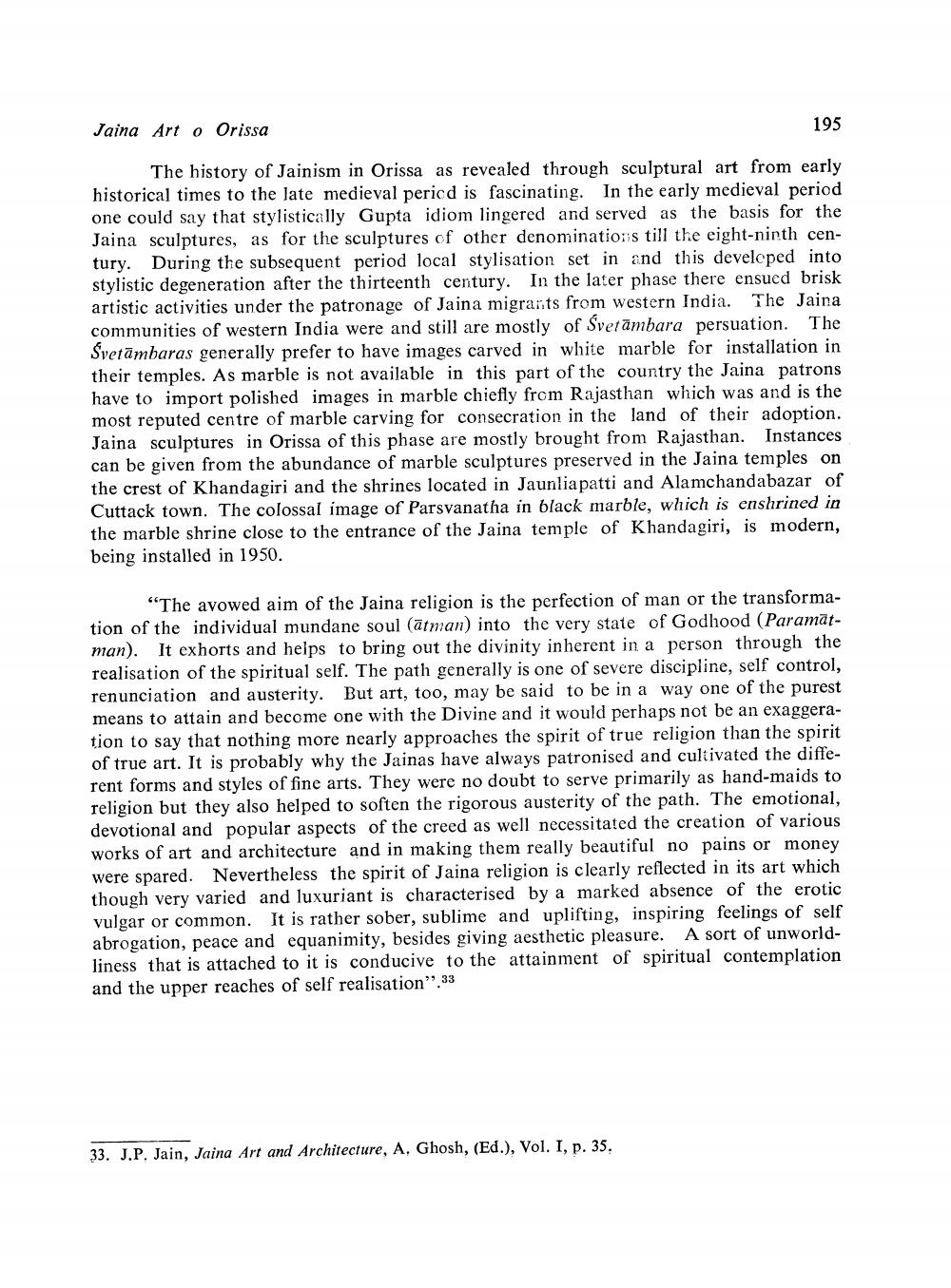________________
Jaina Arto Orissa
195
The history of Jainism in Orissa as revealed through sculptural art from early historical times to the late medieval period is fascinating. In the early medieval period one could say that stylistically Gupta idiom lingered and served as the basis for the Jaina sculptures, as for the sculptures of other denominations till the eight-ninth century. During the subsequent period local stylisation set in and this developed into stylistic degeneration after the thirteenth century. In the later phase there ensued brisk artistic activities under the patronage of Jaina migrants from western India. The Jaina communities of western India were and still are mostly of Svetambara persuation. The Svetāmbaras generally prefer to have images carved in white marble for installation in their temples. As marble is not available in this part of the country the Jaina patrons have to import polished images in marble chiefly from Rajasthan which was and is the most reputed centre of marble carving for consecration in the land of their adoption. Jaina sculptures in Orissa of this phase are mostly brought from Rajasthan. Instances can be given from the abundance of marble sculptures preserved in the Jaina temples on the crest of Khandagiri and the shrines located in Jaunlia patti and Alamchandabazar of Cuttack town. The colossal image of Parsvanatha in black marble, which is enshrined in the marble shrine close to the entrance of the Jaina temple of Khandagiri, is modern, being installed in 1950.
"The avowed aim of the Jaina religion is the perfection of man or the transformation of the individual mundane soul (ātman) into the very state of Godhood (Paramātman). It exhorts and helps to bring out the divinity inherent in a person through the realisation of the spiritual self. The path generally is one of severe discipline, self control, renunciation and austerity. But art, too, may be said to be in a way one of the purest means to attain and become one with the Divine and it would perhaps not be an exaggeration to say that nothing more nearly approaches the spirit of true religion than the spirit of true art. It is probably why the Jainas have always patronised and cultivated the different forms and styles of fine arts. They were no doubt to serve primarily as hand-maids to religion but they also helped to soften the rigorous austerity of the path. The emotional, devotional and popular aspects of the creed as well necessitated the creation of various works of art and architecture and in making them really beautiful no pains or money were spared. Nevertheless the spirit of Jaina religion is clearly reflected in its art which though very varied and luxuriant is characterised by a marked absence of the erotic vulgar or common. It is rather sober, sublime and uplifting, inspiring feelings of self abrogation, peace and equanimity, besides giving aesthetic pleasure. A sort of unworldliness that is attached to it is conducive to the attainment of spiritual contemplation and the upper reaches of self realisation". 33
33. J.P. Jain, Jaina Art and Architecture, A. Ghosh, (Ed.), Vol. I, p. 35.




